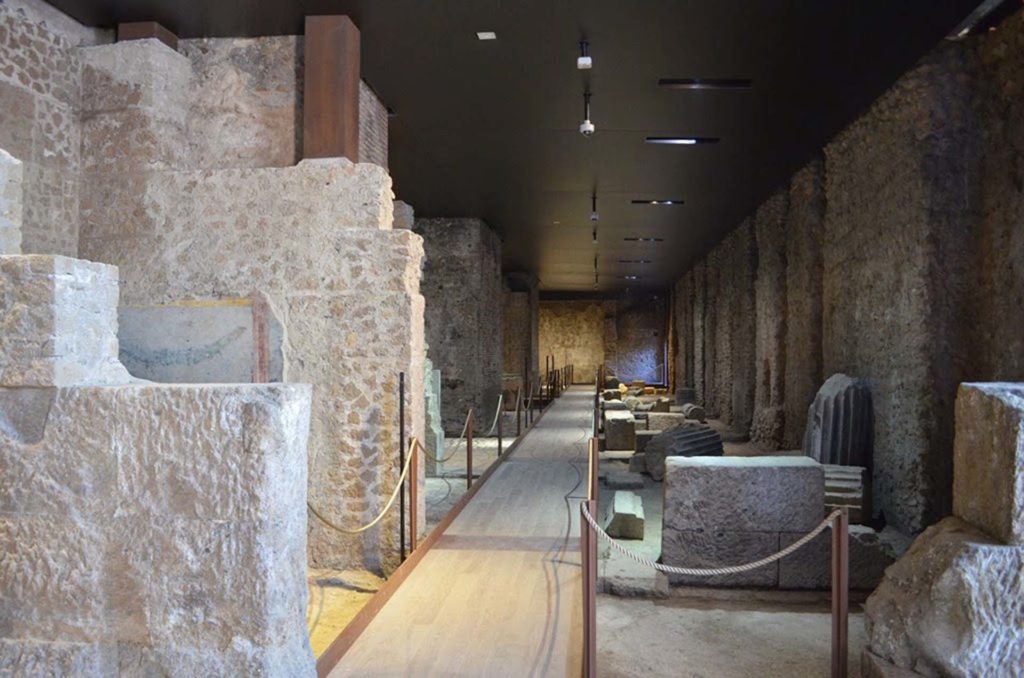Augustan Monumental Complex - Palatine Roman Forum - Rome
The House of Augustus, located on the south-west side of the Palatine Hill, was the House of the Emperor. It overlaps the building of the previous residence of Ottaviano, which was considerably enlarged. The house is divided into a series of tuff rooms divided into two rows that lean against a sturdy retaining wall. On the west side there are a group of smaller rooms, with black and white mosaic floors, intended for housing, while the rooms on the east side, which are arranged around a large central room, seem to have representative functions.
The western wing is characterized by two small rooms which retain their second style pictorial decoration, datable to around 30 BC: one, called the Room of the Masks, inspired by theatrical scenography, and the second called the Room of pine festoons. The eastern public area instead is characterized by larger and richly coated environments. The other wing of the house, on the east side of the peristyle, has other rooms such as a large colonnaded hall with a marble inlaid floor and decoration on the walls; a small square room and finally the room called the Augustus’s Studiolo, decorated with refined paintings and with panels representing plant and animal motifs. This side of the house had a ramp leading to the Temple of Apollo, wanted by Augustus.
Today the access to the building, built on sloping ground, is via a corridor with an inclined plane; its floor is still covered with the original mosaic, with a white background with isolated black tiles, regularly arranged. From the landing, which also retains the original black and white mosaic, one passes into a rectangular courtyard with square pillars, of which the bases remain, which must have supported a canopy. Over time, the house underwent various alterations to be adapted to a new function.
The project involved the renovation of the electrical system and the management of lighting systems through a lighting project. The lighting design was based on the control of the values of the different lighting parameters and photometric quantities, respecting the minimum illuminance values prescribed by current legislation. The use of luminaires with high quality LED sources and having different colour temperatures (2700K, 3000K, 4000K and 5500K) is envisaged, which are dimmable, equipped with differentiated optics. These luminaires are almost all housed in the cover package, except for some linear modules that illuminate from below with grazing light.











